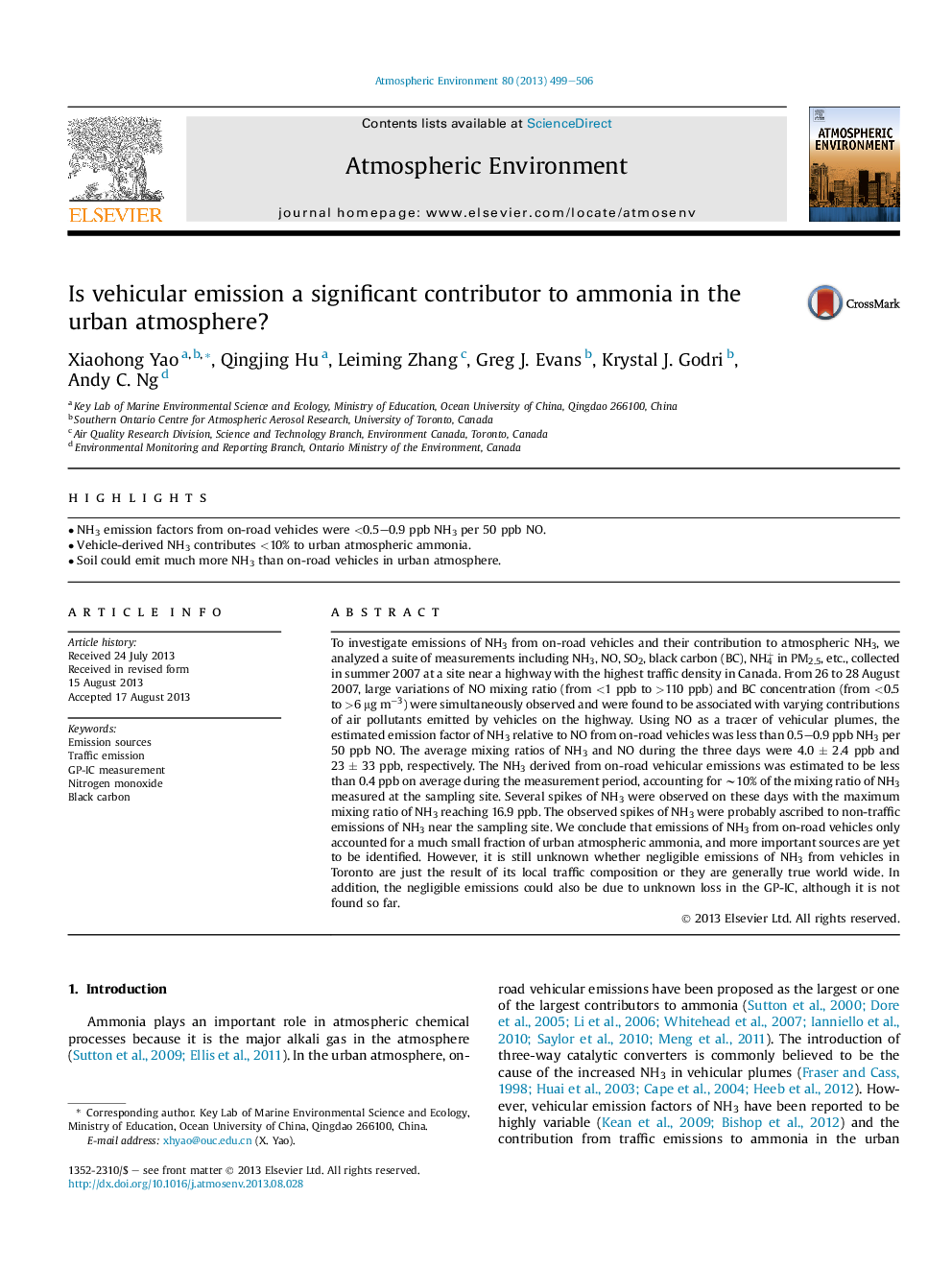| Article ID | Journal | Published Year | Pages | File Type |
|---|---|---|---|---|
| 6340712 | Atmospheric Environment | 2013 | 8 Pages |
Abstract
To investigate emissions of NH3 from on-road vehicles and their contribution to atmospheric NH3, we analyzed a suite of measurements including NH3, NO, SO2, black carbon (BC), NH4+ in PM2.5, etc., collected in summer 2007 at a site near a highway with the highest traffic density in Canada. From 26 to 28 August 2007, large variations of NO mixing ratio (from <1 ppb to >110 ppb) and BC concentration (from <0.5 to >6 μg mâ3) were simultaneously observed and were found to be associated with varying contributions of air pollutants emitted by vehicles on the highway. Using NO as a tracer of vehicular plumes, the estimated emission factor of NH3 relative to NO from on-road vehicles was less than 0.5-0.9 ppb NH3 per 50 ppb NO. The average mixing ratios of NH3 and NO during the three days were 4.0 ± 2.4 ppb and 23 ± 33 ppb, respectively. The NH3 derived from on-road vehicular emissions was estimated to be less than 0.4 ppb on average during the measurement period, accounting for â¼10% of the mixing ratio of NH3 measured at the sampling site. Several spikes of NH3 were observed on these days with the maximum mixing ratio of NH3 reaching 16.9 ppb. The observed spikes of NH3 were probably ascribed to non-traffic emissions of NH3 near the sampling site. We conclude that emissions of NH3 from on-road vehicles only accounted for a much small fraction of urban atmospheric ammonia, and more important sources are yet to be identified. However, it is still unknown whether negligible emissions of NH3 from vehicles in Toronto are just the result of its local traffic composition or they are generally true world wide. In addition, the negligible emissions could also be due to unknown loss in the GP-IC, although it is not found so far.
Related Topics
Physical Sciences and Engineering
Earth and Planetary Sciences
Atmospheric Science
Authors
Xiaohong Yao, Qingjing Hu, Leiming Zhang, Greg J. Evans, Krystal J. Godri, Andy C. Ng,
